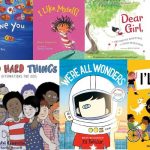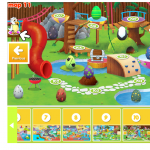Use a Little Creativity to Encourage Your Child to Read
 As an author of a children’s book, I’ve met many parents who lament their child’s lack of interest in reading. Invariably, I’m asked for any tips on how to get him (yes, it’s usually a boy) to sit down and read for more than three minutes. There is no formula to building a love of books because every child is different and, frankly, some kids are naturally inclined toward sitting quietly and getting absorbed in a story. Other, more easily distracted kids, can barely sit long enough to eat a plate of macaroni much less peruse pages covered in type.
As an author of a children’s book, I’ve met many parents who lament their child’s lack of interest in reading. Invariably, I’m asked for any tips on how to get him (yes, it’s usually a boy) to sit down and read for more than three minutes. There is no formula to building a love of books because every child is different and, frankly, some kids are naturally inclined toward sitting quietly and getting absorbed in a story. Other, more easily distracted kids, can barely sit long enough to eat a plate of macaroni much less peruse pages covered in type.
One of the keys to encouraging a child to read is to understand what most interests him or her. And, if reading a book is akin to punishment then parents need to find creative ways to introduce the habit into the child’s daily life. For mom and dad, it may be as simple as broadening their definition of “reading”.
Here are some tips for turning a reluctant reader into a motivated one:
- Investigate kids’ magazine subscriptions. Does your child like the outdoors? Technology? Video games? There is a magazine for almost every subject. In my home, we have four kids’ subscriptions that range from arts and crafts to video games, to LEGO building. Each time the magazine arrives in the mail, the boys spend at least an hour perusing it and sharing information with one another about what they learned.
- Carve out some time during every week (or day depending on the age of child) to sit together and read. For a younger child, this would include reading together. For an older child, it might mean sitting in the same room with him while he reads and being available to chat about it. This works especially well for non-fiction books that offer interesting facts that are easy to share.
- Take note of the times when your son or daughter is reading something other than a book. Trading cards count as reading, as does reviewing video game instructions, knock-knock jokes, and online information. Although it doesn’t seem important to you, it shows that he or she is actually interested in reading – just not necessarily in the typical narrative books. And, better yet, take an interest in what the child has selected. It may help you find that perfect book that initiates a reading spree.
- Go to the library with the kids. Give them free reign to get whatever books they like (even if you know they won’t read them!) This is one of the only places where kids can get whatever they want for free. Regardless of whether or not the books get read, this experience – if done regularly – helps build a “good” feeling about books and can be the start of a long and wonderful relationship.
- Ban the screen sometimes. If reading is in constant competition with video games, TV, iPods (you get the point), why should a kid read? Combine screen-free days with an ever-available stack of books from the library and eventually something is going to get read.
- Kids ask loads of questions every day: Why is the sky blue? What does procrastinate mean? Where do gorillas live? We can’t possibly answer them all! But a parent can help a child find the answer by looking in a book or searching online. Building a child’s inquisitiveness and encouraging him or her to seek out answers will inevitably lead to more reading.
- When a new movie is coming out that interests your son or daughter, buy the book beforehand. Encourage your child to read the book first or, better yet, agree to take him or her to the flick only after finishing the book. Considering that most kids’ shows are based on great books, this tactic offers a lot of reading selection.
Providing ample opportunity for a child to read is key to nurturing a lifelong love of books. And, don’t forget… kids, more than anything, look up to their parents. If they see Mom and Dad reading (not facebooking) regularly, they’re more likely to do the same.
 Danielle Bileski is the author of Danny in a Newfangled World. The first in a new series that chronicles the adventure of a boy in cyberspace for kids 7-11 years old. She blogs about raising kids in the digital age at Porridgereport.com
Danielle Bileski is the author of Danny in a Newfangled World. The first in a new series that chronicles the adventure of a boy in cyberspace for kids 7-11 years old. She blogs about raising kids in the digital age at Porridgereport.com




